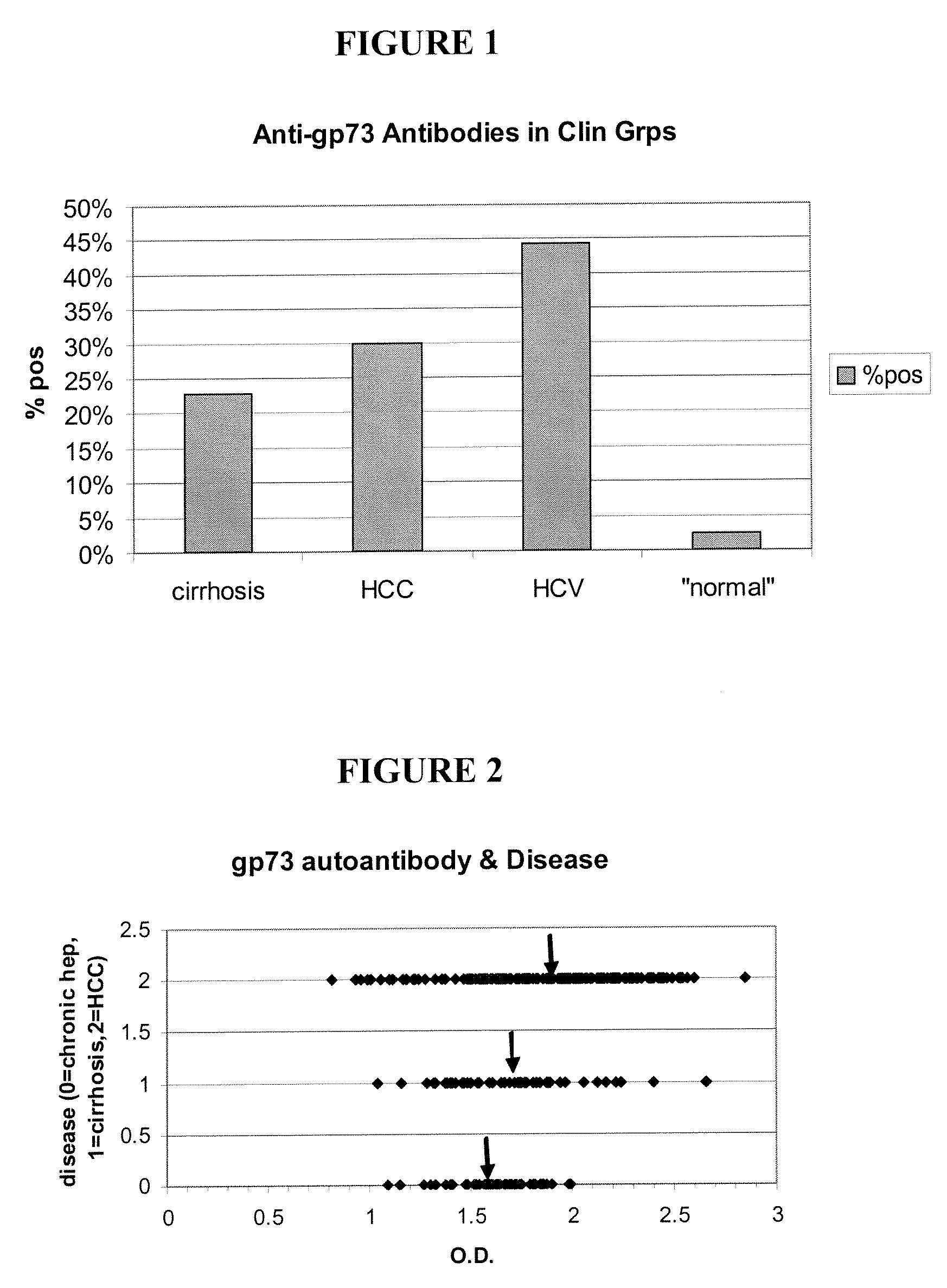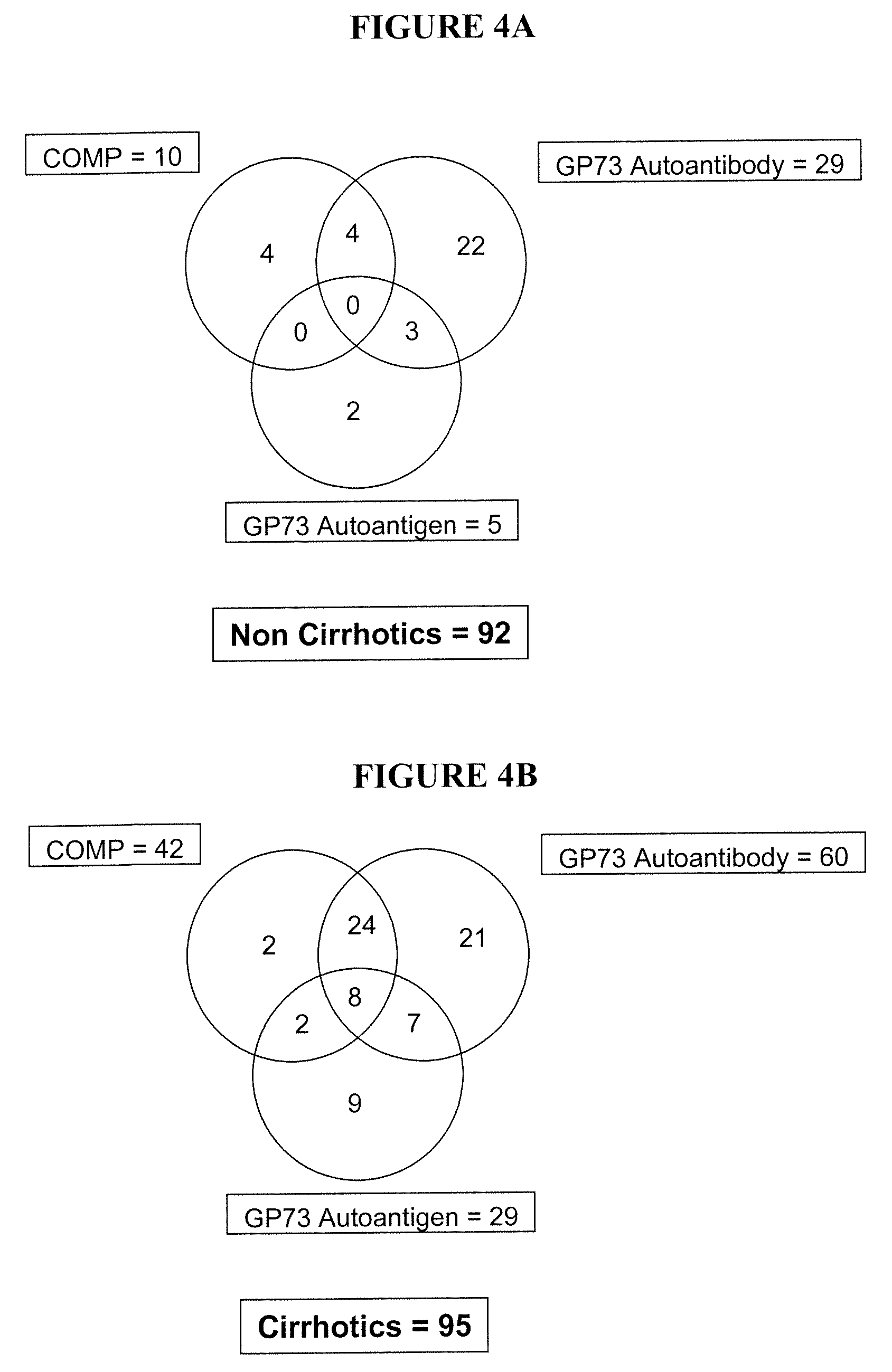Methods and assays for detecting GP73-specific autoantibodies
a technology of gp73 and autoantibodies, applied in the field of autoimmunity, can solve the problems of hepatocellular carcinoma advanced to a stage too late for effective treatment, and patients with long-standing alcoholic cirrhosis are also at risk for developing this type of malignancy
- Summary
- Abstract
- Description
- Claims
- Application Information
AI Technical Summary
Benefits of technology
Problems solved by technology
Method used
Image
Examples
examples
Material and Methods
GP73 Protein
[0069]An inducible GP73-expressing plasmid (BACG81 obtained from St. Louis University, St. Louis, Mo.) was grown by standard methods. Briefly, glycerol stock was streaked on LB / amp (Luria-Bertani broth / Amplicillin) agar plates. A single colony was selected and inoculated in LB broth. Cells were grown and expanded until desired cell density was obtained. IPTG (isopropyl-1-thio-β-D-galactopyranoside) was added and cells were incubated for approx 4 hours. The cells were then harvested by centrifugation. The presence of GP73 in the harvested cell pellet was confirmed by SDS PAGE analysis. Recombinant His-tagged GP73 was isolated using standard techniques. Basically, the GP73 was extracted by the pellet under denaturing conditions and the GP73 protein purified from the lysate by passage over a nickel column. The protein was eluted from the column using an imidazole buffer solution. The purified recombinant GP73 protein was freed of imidazole by extensive d...
PUM
| Property | Measurement | Unit |
|---|---|---|
| molecular weight | aaaaa | aaaaa |
| weight loss | aaaaa | aaaaa |
| ultrasound scans | aaaaa | aaaaa |
Abstract
Description
Claims
Application Information
 Login to View More
Login to View More - R&D
- Intellectual Property
- Life Sciences
- Materials
- Tech Scout
- Unparalleled Data Quality
- Higher Quality Content
- 60% Fewer Hallucinations
Browse by: Latest US Patents, China's latest patents, Technical Efficacy Thesaurus, Application Domain, Technology Topic, Popular Technical Reports.
© 2025 PatSnap. All rights reserved.Legal|Privacy policy|Modern Slavery Act Transparency Statement|Sitemap|About US| Contact US: help@patsnap.com



